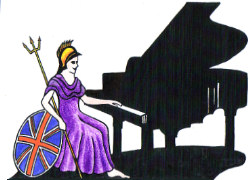Teachers, Accompanists and Piano Entertainers in the UK

UK Piano Page

Browse Locations England » Worcestershire » Bewdley
114, Richmond Road
Bewdley, Worcestershire Dy12 2bq
England
We have been trading since 1991, and specialise in french polishing including ebonising, and various other wood finishes all by hand, and using only ...
High Street Llanerchymedd
Llanfairpwllgwyngyll, Anglesey LL65 3LS
Wales/Cymru
We are a retail Musical Instrument Company in
Verve House
Sunningdale
Ascot, Berkshire SL5 0DJ
England
Handel Pianos is a family run business and our
194 Penn Road
High Wycombe, Buckinghamshire HP15 7 NU
England
Sell both new & used pianos, superb choice of 75
152 Market Street
Dalton-in-Furness, Cumbria LA15 8RQ
England
I-Mex Business Park
Hamilton Road.
Longsight, Greater Manchester M13 0PD
England
We have a carefully selected range of fine quality
Music Festival for performers and guests Our 10th
18-06-2022 12:30PM
The Morecambe Bay Piano Group was set up to extend
11-12-2021 01:00PM
The Morecambe Bay Piano Group was set up to extend
08-01-2022 01:00PM
The Morecambe Bay Piano Group was set up to extend
12-02-2022 01:00PM